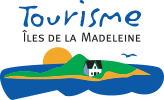

Along Route 199 in the town of Grosse-Île, you will see Grosse-Île Bay. This is a salt-water tidal basin, and, at low tide, almost all the water disappears, leaving a vast expanse of sand where migrating shore birds come to feast.
As the Eastern part of the Islands has few remaining wooded areas, the Grosse-Île forest shelters a wide diversity of species. The many paths along Rock Mountain Road let you observe these species in their own environment. The main trail you can use starts near the Hydro-Québec substation. This is an easy trail, but it does have some hills. Please respect the environment; this is a private property.
On both sides of North Road you will see ponds, puddles and pans that are fairly bursting with life. This is an ideal breeding ground for waterfowl, since it is well protected from storms, the vegetation is tall and there is abundant food nearby.
Just after the town of Grosse-Île, along Route 199 North, there is a migratory bird sanctuary. This is a good spot to observe waterfowl. On the other side of the road you will find the shores of the Grande-Entrée lagoon. This is a good site for the observation of migrating shore birds.
You can observe from the edge of the road or while walking in the forested area. There are four particularly interesting bird-watching sites here, Grosse-Île Bay, Rock Mountain Road and the ponds near North Road and near Route 199 after the town of Grosse-Île.
From mid-July to the end of September, Grosse-Île Bay is a preferred site for migrating shore birds. Many different species stop here: Sandpipers (Tringa), Turnstones and Plovers (Charadrius). Rock Mountain Road is an interesting site for forest birds, and the many paths along the road are good places to observe the different species of passerines. In fall, this is also a good spot for the observation of raptors, including Hawks and Harriers. Many waterfowl come to the ponds near North Road. This is a good spot for the observation of the Pied-billed Grebe (Podilymbus podiceps). The American Coot (Fulica Americana) has been nesting here for the last several years.
Along Route 199 in the migratory bird sanctuary, you can observe many species of waterfowl. All of the shorebirds can be observed along the shores of the lagoon on the other side of the road. Several rare birds have also been sighted in this sector, such as the Little Blue Heron (Egretta caerulea), the Snowy Egret (Egretta thula) and the Cattle Egret (Bubulcus ibis).
Grosse-Île Bay runs along Route 199, from a little after the salt mine to North Road. There are two particularly interesting areas for bird watchers, one near the bridge when you come into the municipality of Grosse-Île and the other behind the building on which you see a sign reading "Harmonium antiques".
To get to Rock Mountain Road, you go to the top of the hill and park in front of the Hydro-Québec substation. From there you walk south about 200 metres and you will come to a short forest path leading to a large clearing near the Grande-Entrée lagoon.
You can reach North Road from Route 199, in the centre of the town of Grosse-Île.